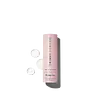What's inside
What's inside
 Key Ingredients
Key Ingredients

 Benefits
Benefits

 Concerns
Concerns

No concerns
 Ingredients Side-by-side
Ingredients Side-by-side

Water
Skin ConditioningGlycerin
HumectantPentylene Glycol
Skin ConditioningSodium Hyaluronate
HumectantBetaine
HumectantHydrolyzed Wheat Protein
Skin ConditioningOligopeptide-78
Skin ConditioningPalmitoyl Decapeptide-21
Skin ConditioningZinc Palmitoyl Nonapeptide-14
Skin ConditioningHexapeptide-9
Skin ConditioningDecapeptide-21
Skin ConditioningOligopeptide-1
Skin ConditioningXylitylglucoside
HumectantAnhydroxylitol
HumectantXylitol
HumectantSucrose
HumectantPlankton Extract
Skin ConditioningGlucose
HumectantLecithin
EmollientButylene Glycol
HumectantHydroxyacetophenone
AntioxidantSodium Hydroxide
BufferingWater, Glycerin, Pentylene Glycol, Sodium Hyaluronate, Betaine, Hydrolyzed Wheat Protein, Oligopeptide-78, Palmitoyl Decapeptide-21, Zinc Palmitoyl Nonapeptide-14, Hexapeptide-9, Decapeptide-21, Oligopeptide-1, Xylitylglucoside, Anhydroxylitol, Xylitol, Sucrose, Plankton Extract, Glucose, Lecithin, Butylene Glycol, Hydroxyacetophenone, Sodium Hydroxide
Water
Skin ConditioningPentylene Glycol
Skin ConditioningSodium Lactate
BufferingGlycerin
HumectantMethylpropanediol
SolventSalix Nigra Bark Extract
Skin ProtectingMandelic Acid
AntimicrobialChlorella Vulgaris Extract
Skin ConditioningMalva Sylvestris Flower Extract
Skin ConditioningCinnamomum Cassia Bark
Skin ConditioningSanguisorba Officinalis Root Extract
CleansingZingiber Officinale Root Extract
MaskingUrtica Dioica Extract
AstringentXanthan Gum
EmulsifyingAcetum
Caprylyl Glycol
EmollientPropanediol
SolventSalicylic Acid
MaskingDextrin
AbsorbentPolydextrose
HumectantAmylopectin
Niacinamide
SmoothingPhenylpropanol
MaskingLactic Acid
BufferingPotassium Sorbate
PreservativeSodium Benzoate
MaskingWater, Pentylene Glycol, Sodium Lactate, Glycerin, Methylpropanediol, Salix Nigra Bark Extract, Mandelic Acid, Chlorella Vulgaris Extract, Malva Sylvestris Flower Extract, Cinnamomum Cassia Bark, Sanguisorba Officinalis Root Extract, Zingiber Officinale Root Extract, Urtica Dioica Extract, Xanthan Gum, Acetum, Caprylyl Glycol, Propanediol, Salicylic Acid, Dextrin, Polydextrose, Amylopectin, Niacinamide, Phenylpropanol, Lactic Acid, Potassium Sorbate, Sodium Benzoate
Ingredients Explained
These ingredients are found in both products.
Ingredients higher up in an ingredient list are typically present in a larger amount.
Glycerin is already naturally found in your skin. It helps moisturize and protect your skin.
A study from 2016 found glycerin to be more effective as a humectant than AHAs and hyaluronic acid.
As a humectant, it helps the skin stay hydrated by pulling moisture to your skin. The low molecular weight of glycerin allows it to pull moisture into the deeper layers of your skin.
Hydrated skin improves your skin barrier; Your skin barrier helps protect against irritants and bacteria.
Glycerin has also been found to have antimicrobial and antiviral properties. Due to these properties, glycerin is often used in wound and burn treatments.
In cosmetics, glycerin is usually derived from plants such as soybean or palm. However, it can also be sourced from animals, such as tallow or animal fat.
This ingredient is organic, colorless, odorless, and non-toxic.
Glycerin is the name for this ingredient in American English. British English uses Glycerol/Glycerine.
Learn more about GlycerinPentylene glycol is typically used within a product to thicken it. It also adds a smooth, soft, and moisturizing feel to the product. It is naturally found in plants such as sugar beets.
The hydrophilic trait of Pentylene Glycol makes it a humectant. As a humectant, Pentylene Glycol helps draw moisture from the air to your skin. This can help keep your skin hydrated.
This property also makes Pentylene Glycol a great texture enhancer. It can also help thicken or stabilize a product.
Pentylene Glycol also acts as a mild preservative and helps to keep a product microbe-free.
Some people may experience mild eye and skin irritation from Pentylene Glycol. We always recommend speaking with a professional about using this ingredient in your routine.
Pentylene Glycol has a low molecular weight and is part of the 1,2-glycol family.
Learn more about Pentylene GlycolWater. It's the most common cosmetic ingredient of all. You'll usually see it at the top of ingredient lists, meaning that it makes up the largest part of the product.
So why is it so popular? Water most often acts as a solvent - this means that it helps dissolve other ingredients into the formulation.
You'll also recognize water as that liquid we all need to stay alive. If you see this, drink a glass of water. Stay hydrated!
Learn more about Water